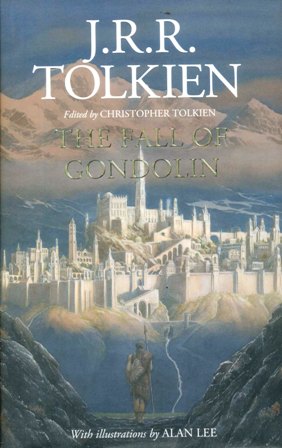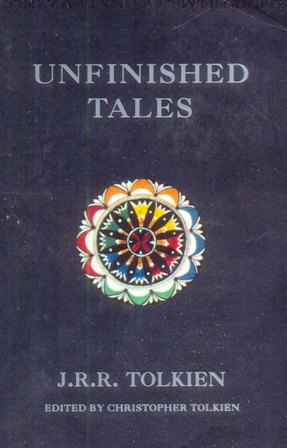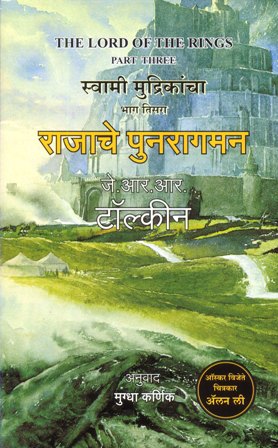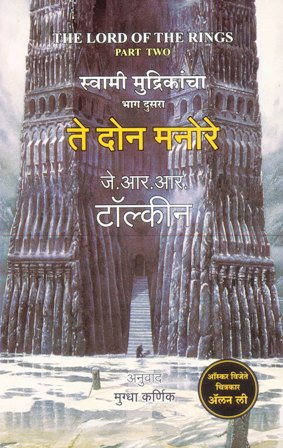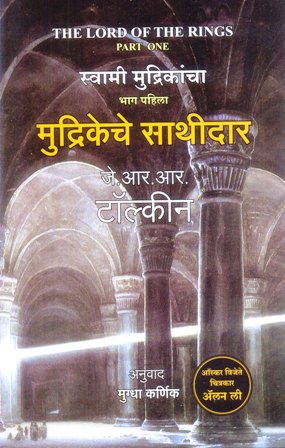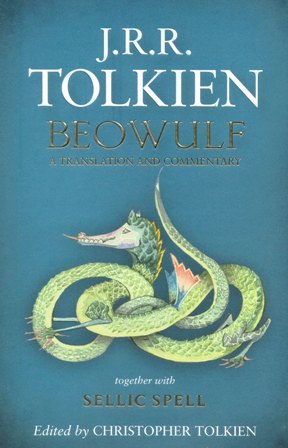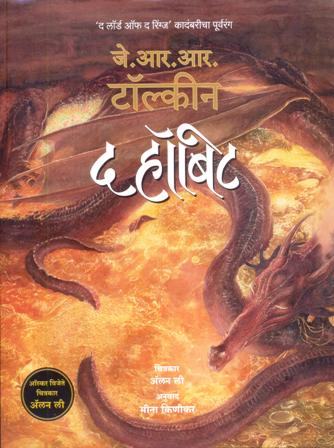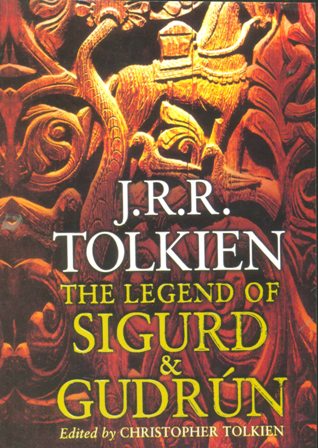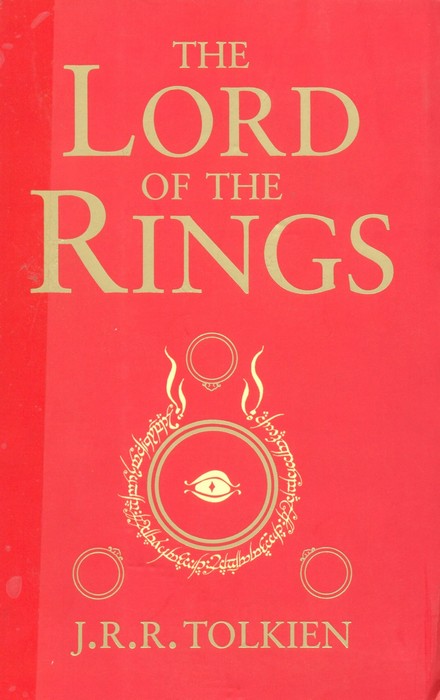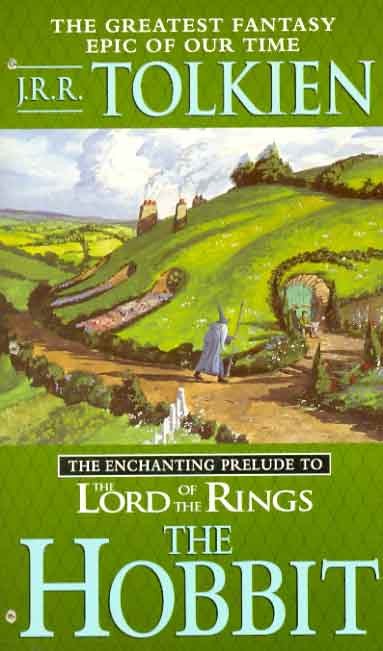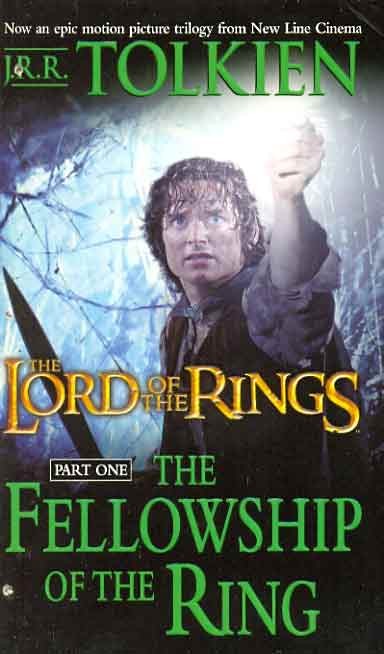-
The Fall of Gondolin
In the Tale of the Fall of Gondolin are two of the greatest powers in the world. There is Morgoth of the uttermost evil, unseen in this story but ruling over a vast military power from his fortress of Angband. Deeply opposed to Morgoth is Ulmo, second in might only to Manwe, chief of the Valar. Central to this enmity of the gods is the city of Gondolin, beautiful but undiscoverable. It was built and peopled by Noldorin Elves who, when they dwelt in Valinor, the land of the gods, rebelled against their rule and fled to Middle-earth. Turgon King of Gondolin is hated and feared above all his enemies by Morgoth, who seeks in vain to discover the marvellously hidden city, while the gods in Valinor in heated debate largely refuse to intervene in support of Ulmo's desires and designs. Into this world comes Tuor, cousin of Turin, the instrument of Ulmo's designs. Guided unseen by him Tuor sets out from the land of his birth on the fearful journey to Gondolin and in one of the most arresting moments in the history of Middle-earth the sea-god himself appears to him, rising out of the ocean in the midst of a storm. In Gondolin he becomes great; he is wedded to Idril, Turgon's daughter and their son is Earendel, whose birth and profound importance in days to come is foreseen by Ulmo. At last comes the terrible ending. Morgoth learns through an act of supreme treachery all that he needs to mount a devastating attack on the city, with Balrogs and dragons and numberless Orcs. After a minutely observed account of the fall of Gondolin, the tale ends with the escape of Tuor and Idril, with the child Earendel, looking back from a cleft in the mountains as they flee southward, at the blazing wreckage of their city. They were journeying into a new story, the Tale of Earendel, which Tolkien never wrote, but which is sketched out in this book from other sources. Following his presentation of Beren and Luthien Christopher Tolkien has used the same 'history in sequence' mode in the writing of this edition of the Fall of Gondolin. In the words of J.R.R. Tolkien, it was ‘the first real story of this imaginary world’ and, together with Beren and Luthien and the Children of Hurin, he regarded it as one of the three 'Great Tales' of the Elder Days.
-
Unfinished Tales
Published posthumously by Tolkien's youngest son, The Unfinished Tales of Numenor and Middle Earth tells the stories of how Gandalf found Bilbo and how he decided to send the Dwarves of Erebor to him. It also tells the story of Aldarion and Erendis, one of the most moving love stories to be found in Tolkien's fantasy setting. Illuminating on subjects hitherto untouched such as the identities of the five Istari who would later be known as Wizards, the Palantiri and their making, the legend of Amroth and the coming of the sea god Ulmo before Tuor on the coast of Beleriand, this is a collection any Tolkien fan would not want to miss.
-
Beowulf : A Translation and Commentary - Together
This edition is twofold, for there exists an illuminating commentary on the text of the poem by the translator himself, in the written form of a series of lectures given at Oxford in the 1930s and from these lectures a substantial selection has been made, to form also a commentary on the translation in this book. From his creative attention to detail in these lectures there arises a sense of the immediacy and clarity of his vision. It is as if he entered into the imagined past- standing beside Beowulf and his men shaking out their mail-shirts as they beached their ship on the coast of Denmark, listening to the rising anger of Beowulf at the taunting of Unferth, or looking up in amazement at Grendels terrible hand set under the roof of Heorot. But the commentary in this book includes also much from those lectures in which, while always anchored in the text, he expressed his wider perceptions. He looks closely at the dragon that would sly Beowulf snuffling in baffled rage and injured greed when he discovers the theft of the cup but he rebuts the notion that this is a mere treasure story, just another dragon tale. He turns to the lines that tell of the burying of the golden things long ago and observes that it is the feeling for the treasure itself, this sad history that raises it to another level. The whole thing is sombre, tragic, sinister, curiously real. The 'treasure' is not just some lucky wealth that will enable the finder to have a good time, or marry the princess. It is laden with history, leading back into the dark heathen ages beyond the memory of song, but not beyond the reach of imagination. About the Author J. R. R. Tolkien is best known for The Hobbit and The Lord of the Rings, selling 150 million copies in more than 60 languages worldwide. He died in 1973 at the age of 81. Christopher Tolkien is the third son of J. R. R. Tolkien. Appointed by J. R. R. Tolkien to be his literary executor, he has devoted himself to the publication of his fathers unpublished writings, notably The Silmarillion and The History of Middle-earth.
-
The Hobbit (द हॉबिट)
"द हॉबिट' ही एक कल्पनारम्य गूढकथा आहे किंवा गूढ अशी कल्पनाकथा आहे. मुलांसाठीच असल्यामुळे तीमध्ये मुलांच्या कल्पनाविश्वात जे जे साहसी, धाडसी, गूढ, कल्पनारम्य, अगम्य असे असेल ते ते सर्व या कादंबरीत आहे. मुलांच्या विश्वातील मनोव्यापाराला तार्किक व तर्कसंगत प्रश्न विचारायचे नसतात किंवा त्या प्रश्नांची उत्तरं कार्यकारणभाव सिद्धान्ताचा वापर करून शोधायची नसतात. कल्पनारम्य मनोव्यापार हीच ती संगती आहे. टॉल्किनने याच सूत्राचा वापर करून "द हॉबिट' लिहिली आहे. पराक्रम, धाडस, जादू, चमत्कार या सर्व गोष्टींची रेलचेल "द हॉबिट'मध्ये असल्याने वाचक त्यात आकंठ बुडून जातो आणि त्यातील ड्वार्फसबरोबर त्याचाही प्रवास सुरू होतो. "द हॉबिट' हाच एक चित्तथरारक प्रवास आहे. कारण टॉल्किनने कादंबरीच्या पर्यायी नावातच त्या प्रवासाचे सूचन केले आहे.
-
-
The Lord Of The Rings
Three Rings for the Elven-kings under the sky, Seven for the Dwarf-lords in their halls of stone Nine for Mortal Men doomed to die, One for the Dark Lord on his dark throne In the Land of Mordor where the Shadows lie. One Ring to rule them all, One Ring to find them, One Ring to find them, One Ring to bring them all and in the darkness bind them In the Land of Mordor where the Shadows lie.' In ancient times the Rings of Power were crafted by the Eleven-smiths, and Sauron, the Dark Lord, forged the One Ring, filling it with his own power so that he could rule all others. But the One Ring was taken from him, and though he sought it throughout Middle-earth still it remained lost to him. After many ages it fell, by chance, into the hands of the hobbit, Bilbo Baggins. From his fastness in the Dark Tower of Mordor, Sauron's power spread far and wide. He gathered all the Great Rings to him, but ever he searched for the One Ring that would complete his dominion. On his eleventy-first birthday, Bilbo disappeared, bequeathing to his young cousin, Frodo, the Ruling Ring, and a perilous quest: to journey across Middle-earth, deep into the shadow of the Dark Lord and destroy the Ring by casting it into the Cracks of Doom. The lord of the rings tells of the great quest undertaken by Frodo and the Fellowship of the Ring: Gandalf the wizard, Merry, pippin and Sam, Gimli the Dwarf, Legolas the Elf, Boromir of Gondor, and a tall, mysterious stranger called Strider.
-
The Hobbit
Bilbo Baggins was a hobbit who wanted to be left alone in quiet comfort. But the wizard Gandalf came along with a band of homeless dwarves. Soon Bilbo was drawn into their quest, facing evil orcs, savage wolves, giant spiders, and worse unknown dangers. Finally, it was Bilbo
-
The Fellowship Of Ring (The Lord Of The Rings Part 1)
Three Rings for the Elven-kings under the sky, Seven for the Dwarf-lords in their halls of stone Nine for Mortal Men doomed to die, One for the Dark Lord on his dark throne In the Land of Mordor where the Shadows lie. One Ring to rule them all, One Ring to find them, One Ring to find them, One Ring to bring them all and in the darkness bind them In the Land of Mordor where the Shadows lie.' In ancient times the Rings of Power were crafted by the Eleven-smiths, and Sauron, the Dark Lord, forged the One Ring, filling it with his own power so that he could rule all others. But the One Ring was taken from him, and though he sought it throughout Middle-earth still it remained lost to him. After many ages it fell, by chance, into the hands of the hobbit, Bilbo Baggins. From his fastness in the Dark Tower of Mordor, Sauron's power spread far and wide. He gathered all the Great Rings to him, but ever he searched for the One Ring that would complete his dominion. On his eleventy-first birthday, Bilbo disappeared, bequeathing to his young cousin, Frodo, the Ruling Ring, and a perilous quest: to journey across Middle-earth, deep into the shadow of the Dark Lord and destroy the Ring by casting it into the Cracks of Doom. The lord of the rings tells of the great quest undertaken by Frodo and the Fellowship of the Ring: Gandalf the wizard, Merry, pippin and Sam, Gimli the Dwarf, Legolas the Elf, Boromir of Gondor, and a tall, mysterious stranger called Strider.

